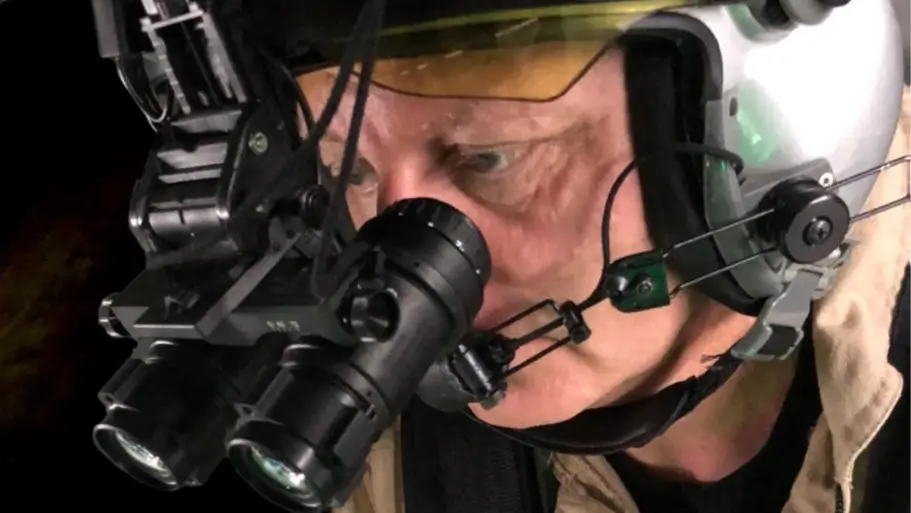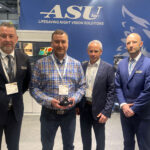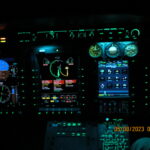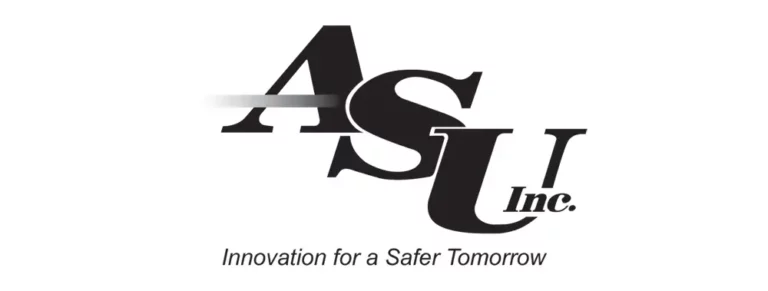Aviation Specialties Unlimited (ASU) spoke to attendees about the benefits of bringing night vision goggles (NVGs) into their operation. A panel of three ag pilots gave their perspectives on how NVGs have improved their operations and answered questions from pilots and operators in the audience who might be considering adopting NVGs.
ASU’s Twain Josephson started the session by giving a brief introduction about ASU. ASU provides high-quality products and services to a wide range of customers around the world. These include numerous government and private agencies such as civil emergency medical services (EMS), military services, and federal, state and local law enforcement agencies, including the U.S. Forest Service, Bureau of Land Management, and Department of Energy. ASU’s products support search and rescue, fugitive apprehension, airborne surveillance and security, and fire suppression missions.
Kip McDermott, ASU’s vice president of engineering, then explained the process to get STC approval for NVGs from the FAA, saying it takes about three to four months. It takes ASU about eight weeks to build the parts and do installation, followed by testing from the FAA. The FAA will first do day and night ground testing, followed by a day VFR flight, a night VFR flight and finally a night flight with the NVGs. Next, the FAA will issue an STC. ASU has seen an STC issued as quickly as 24 hours, but it can also take as long as several months. Every aircraft that gets certified for NVGs makes it easier for the next aircraft he added. McDermott said ASU has done about 1,500 to 1,600 civil aircraft worldwide across the U.S., Canada, the EU and Australia. That doesn’t include the military aircraft they work with as well.
The three panelists included Bruce Hubler of Caldwell, Idaho, Bob Klein of Lawrenceville, Ill., and Ken Meines of Pullman, Wash. All three panelists explained that NVGs let you see exactly what you see during the day, albeit in black and white. There is no limit to how far you can see, and while NVGs can’t see through clouds or fog, they are extremely useful for seeing approaching storms on the horizon.
Another panelist said he always considered his operation anywhere from a 1 to 1.75-aircraft operation. He could never quite justify the purchase of a second plane, so he invested in NGVs to expand the capabilities of his existing aircraft. He said since installing the NVGs he has never been more than three days behind on work, while a non-NVG equipped competitor with two aircraft can get up to 10 days behind.
An operator considering adopting NVGs asked the panel what qualities he should look for in pilots to see if NVGs are right for them. One panelist said that while an instrument rating is not necessary, he won’t let his pilots fly with NVGs unless they have their instrument rating.
NVGs do require some maintenance and must be sent back to the manufacturer every 180 days for an inspection, which lasts approximately two days.
All panelists agreed that while it might be an intense process to get a lightbar and NVGs installed in your aircraft, it’s well worth it due to the expanded times you can fly, cooler temperatures and pollinator protection issues.
Read about other NAAA 2018 education sessions here.
Photo Courtesy of Ag Air Update. Read the full article about Jim Perrin NVG operations at AgriCair here.






